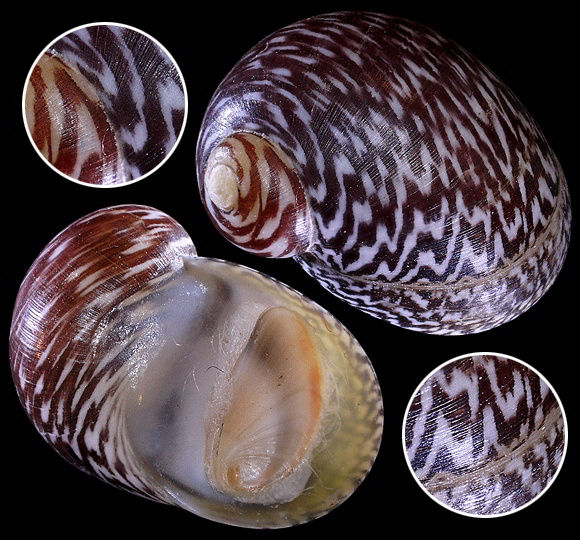
Southern Iberian Peninsula and Baleares to Balkanic region, SW. Anatolia, Sicily, NW. Tunisia – vanishing in Tunisia. Grazer, on stones and rocks. Original taxon: Neritina baetica. Many synonyms: elongatulus, guadianensis, meridionalis, varius, velascoi… also callosus according to Sands & al., 2020. – Above, a large specimen collected under stone, Barranco Gomar, Bicorp, Comunidad Valenciana, E. Spain. 11mm.
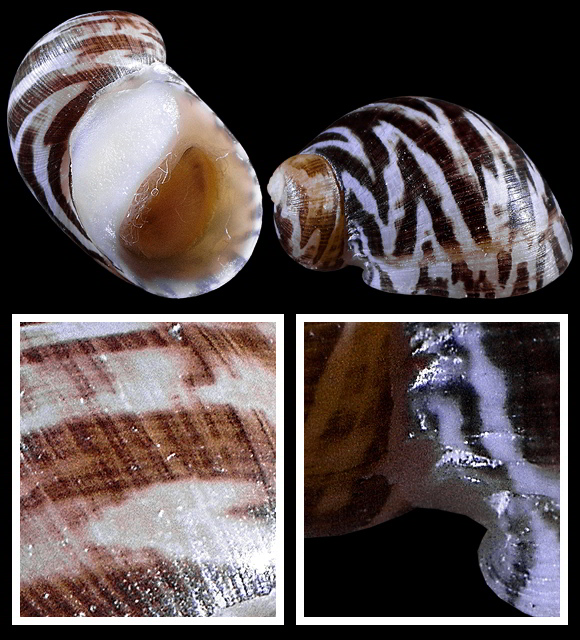
The species is highly variable in all its conchological characters, as it has been revealed by Sands’s studies conducted at the turn of the XXth-XXIth century, which have concluded to a very important synonymy.
Above, a specimen collected under rock at Alzira, Comunidad Valenciana. 8,5mm. This is the variant ex-forma “elongatula” Morelet, who writes: « The summit of this Neritine is rounded and protruding; the last whorl is narrow and elongated; the aperture is small, oval, tapering inside; the outer edge flexes a little before its insertion; the inner edge produces a convex callus of a fairly bright pearl-gray or yellow color. The test is smooth, polished and very shiny; white or yellowish with black, purplish, or dark red lineoles. […] The operculum is greyish, striated, bordered on the upper side with a very bright red area, marked with a bluish spot at its internal angle. Its apophysis is very strong. » – A. Morelet: Description des mollusques terrestres et fluviatiles du Portugal, Paris 1845, p.96.
Above, a specimen collected under rock at Alzira, Comunidad Valenciana. 8,5mm. This is the variant ex-forma “elongatula” Morelet, who writes: « The summit of this Neritine is rounded and protruding; the last whorl is narrow and elongated; the aperture is small, oval, tapering inside; the outer edge flexes a little before its insertion; the inner edge produces a convex callus of a fairly bright pearl-gray or yellow color. The test is smooth, polished and very shiny; white or yellowish with black, purplish, or dark red lineoles. […] The operculum is greyish, striated, bordered on the upper side with a very bright red area, marked with a bluish spot at its internal angle. Its apophysis is very strong. » – A. Morelet: Description des mollusques terrestres et fluviatiles du Portugal, Paris 1845, p.96.
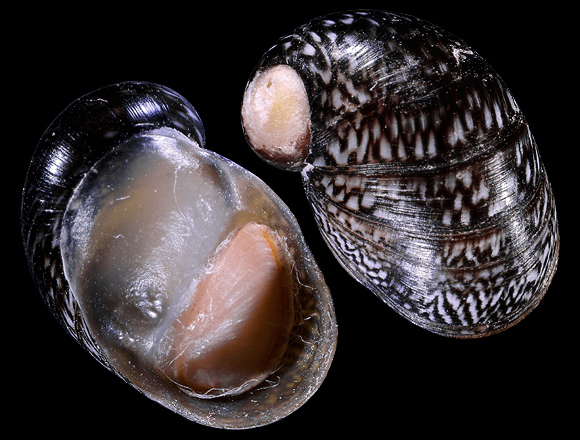
1m deep, under stone, Montanejos, Alto Mijares, Comunitat Valenciana. 10,45mm.
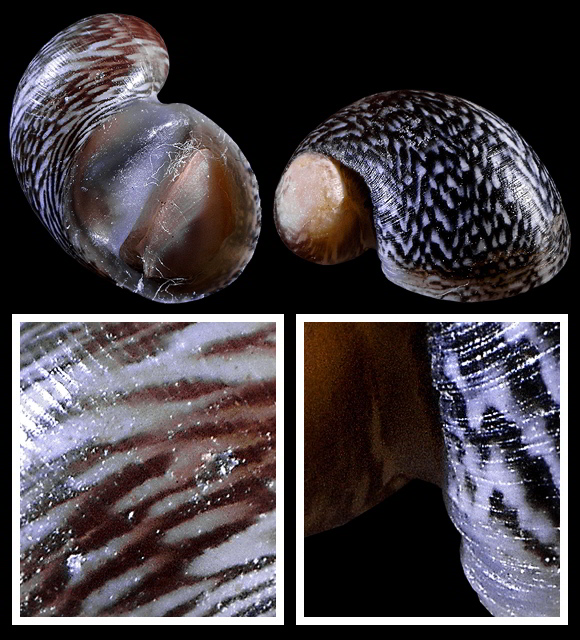
Under stone, Orce, Granada, Andalucia, S. Spain. 9,1mm.
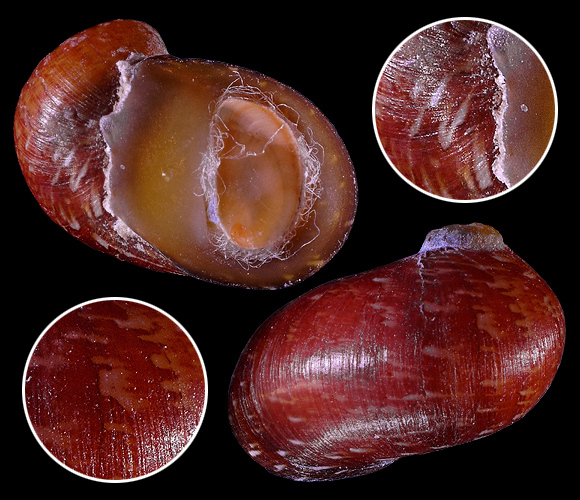
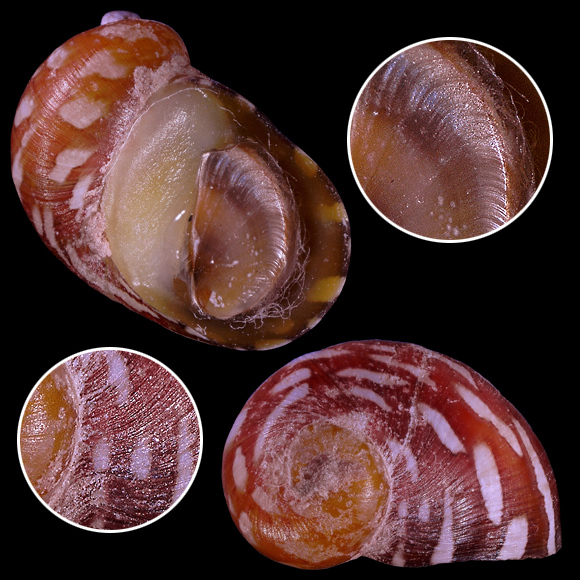

« Shell fairly spherical, fine and densely striped, shiny, dark brown, with narrow, little visible dark ribbons. Spire prominent, mostly eroded, the eroded places white; penultimate whorl bulbous; suture simple, very low anteriorly. Mouth rather oblique, half-shaped, gray inside, blackened, the upper margin a little less curved than the lower margin, columellar plate edentulous, rather straight, columellar margin even, rather narrow, fine, bluish, clearly bounded behind in a flat arch. » – op. cit. p.234.
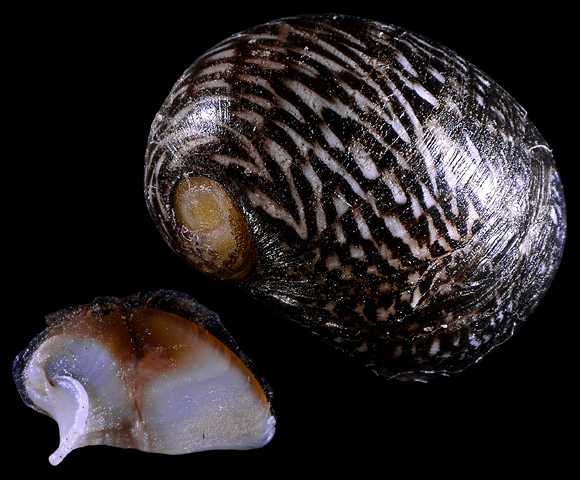
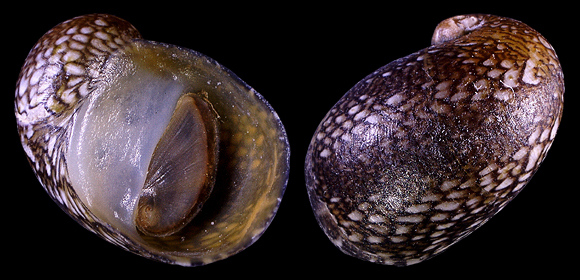
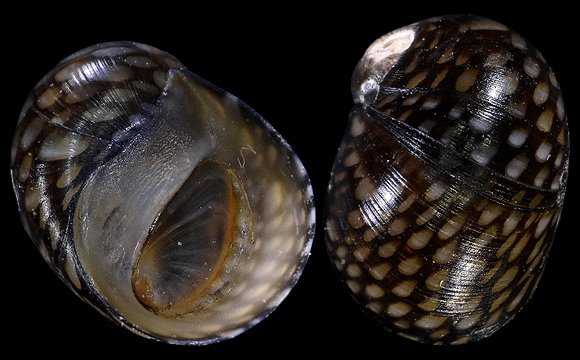

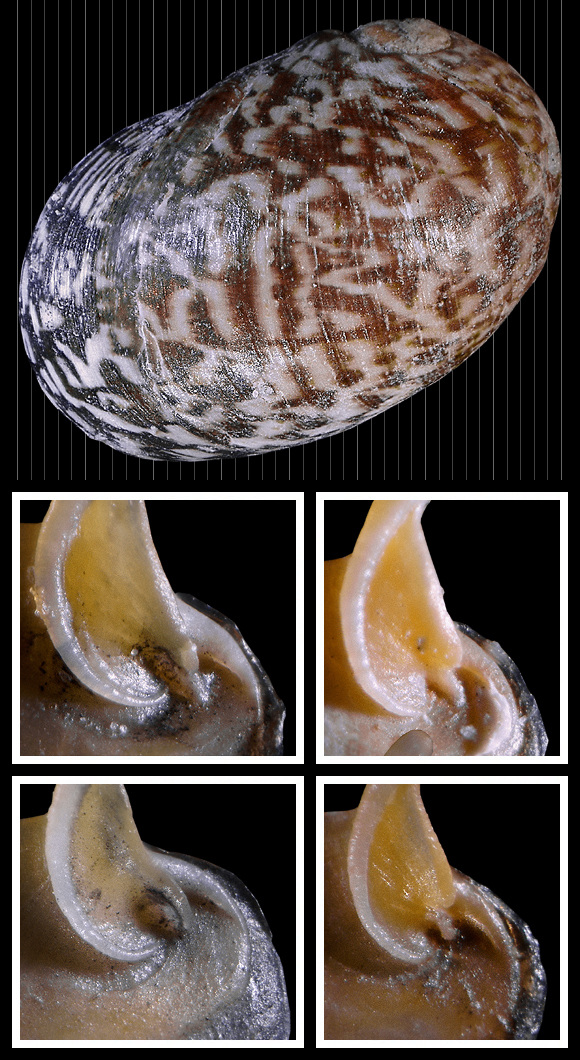
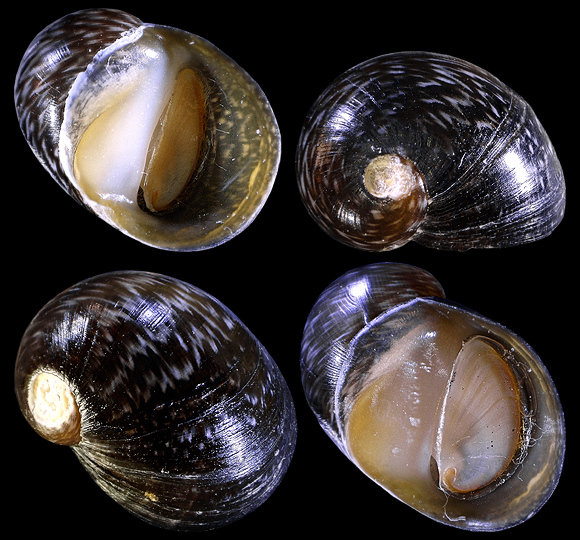



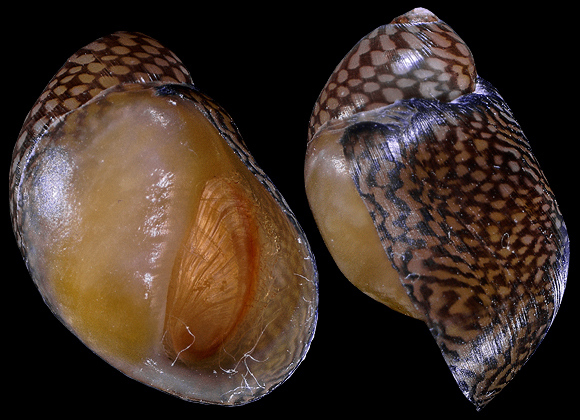


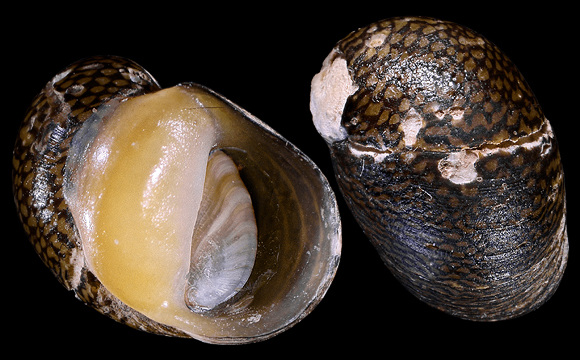
« The conoid shape of this shell and the longitudinal depression of the last whorl distinguish it from all the Neritines of Europe. The first whorls of the spire present a conical nipple, the top of which is usually decayed; the last one is elongated, subangular at its periphery, narrowed at its termination and depressed longitudinally to a quarter of its height, from the suture. This slope results in a slight bending on the outer edge which then rises to curve backwards at its insertion point. This last character is salient and remarkable in old shells. » – A. Morelet: op. cit. p.95-96.
Shallow water on stones, Guadiana river, Alcoutim, Algarve, S. Portugal. 11mm.
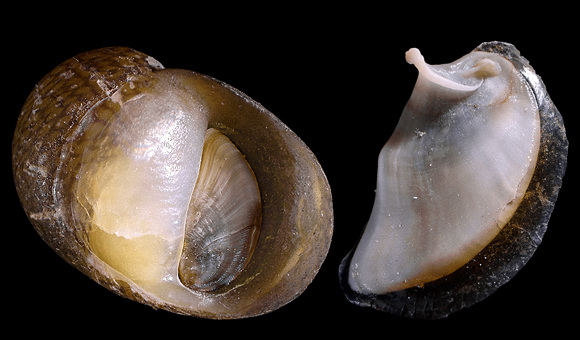
Same spot. 10,8mm. « The columellar edge is thickened by a callus of a gray or fairly bright yellow color, the projection of which produces a strong convexity at the base. The aperture is small; the test appears blackish, but it is actually green or yellowish; thick, dull, covered with a network of dark, fine, tight, angular, often articulated lineoles; this ornamentation sometimes disappears on a background that is too dark and the shell seems then single-colored. More rarely the lineoles are red, and give it an unusual shine. » – Ibid.

« The operculum is dirty white, bordered with orange. Its lower limb is sinuous and its apophysis almost straight. »

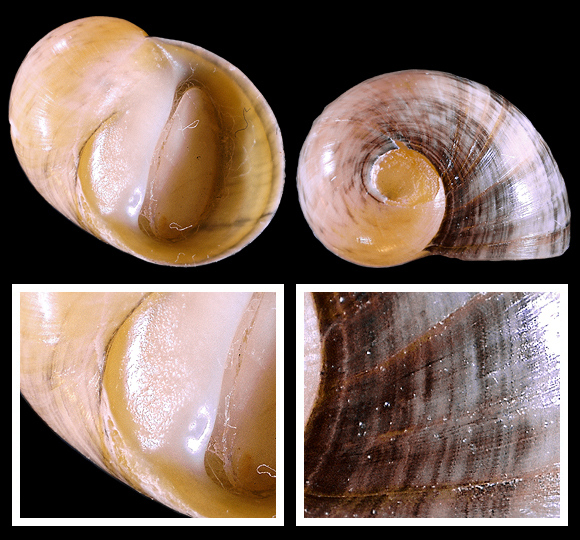
A specimen from Caldas da Rainha. 8,2mm.

« Shell roughly oval, rather thin, dull and presenting, on a dirty white background, fascias or black reticulalions, or a combination of these two systems of ornaments (PI. XI, fig.2, 2a and 2b). Spire slightly protruding, inclined laterally and terminated by an obtuse apex, inconspicuous and sometimes truncated. Suture simple. Whorls 2½, rapidly growing and convex in shape; last one large, developed, forming almost the entire shell on its own, showing no signs of constriction in its middle part and rounded at the base. Aperture of a livid lemon yellow, leaving more or less appear, by transparency, the fascias of the last whorl of the spire. Columella not denticulate, ending in a fairly developed callous deposit of a dirty yellow colour. » – H. Crosse: “Description d’une nouvelle espèce de Neritina d’Espagne”, Journal de Conchyliologie vol.28, Paris 1880, p.321.
Northern Alicante Province. 6mm.
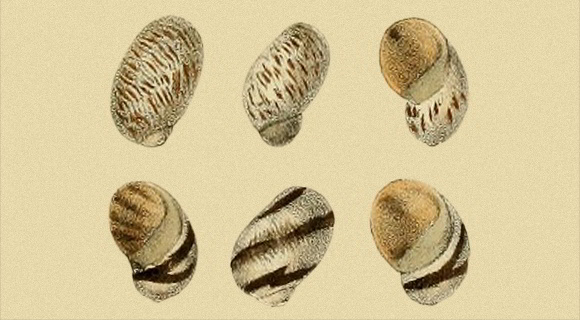
«By its colours as well as by its habitat, this species is very close to the typical N. Valentina and to the form that M. Graëlls distinguished under the name of N. Velascoi, but it differs from it by its undeveloped spire, not at all turriculate and with very pronounced lateral inclination; by its last whorl uniformly rounded and showing no appearance of constriction in its middle part; by the more or less orange yellow of its aperture; finally, by its noticeably smaller size. We are pleased to dedicate it to our honorable colleague from Madrid, Dr. J. Gonzalez Hidalgo, well known in science for his important work on the molluscs of Spain, Portugal and South America. »
Above: the two variants in Crosse, plate XI.
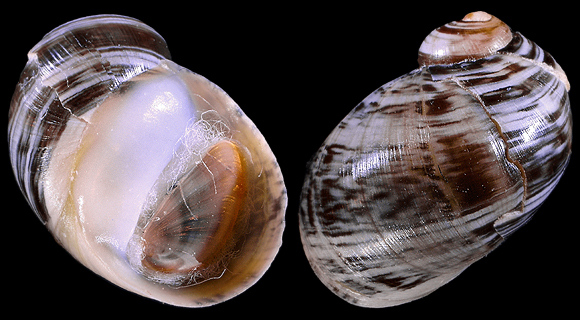
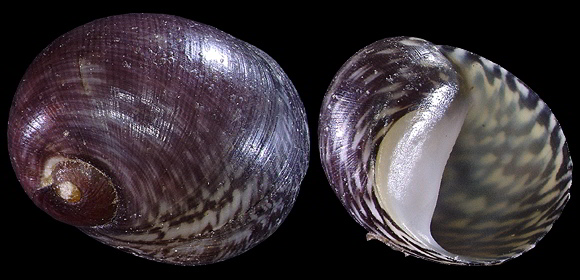
There is a discussion about the validity of the taxon Nerita meridionalis, which is considered as a junior synonym of baeticus by many authors such as by Peter Glöer (cf. his paper in Ecologia Montenegrina vol. 18, 2018, p.133-137), and as the valid taxon by Martínez-Ortí & Osca (in the answer to Glöer published in Zoolentia vol. 3 in 2023, p.1-17, where specimens from the type-locality of baeticus would actually reveal a molecular sequence that is found in fluviatilis). Therefore, the taxon Th. baeticus is considered, for the moment, as a nomen dubium.

« Although Philippi indicates as its habitat in the rivers of Sicily, we restrict the type locality to the freshwaters of Siracusa, based on the label with the locality name that appears handwritten by R. Philippi, found on the sample of his collection (MNHNCL) in Santiago de Chile » – Martínez-Ortí & Osca: op. cit. p.6.
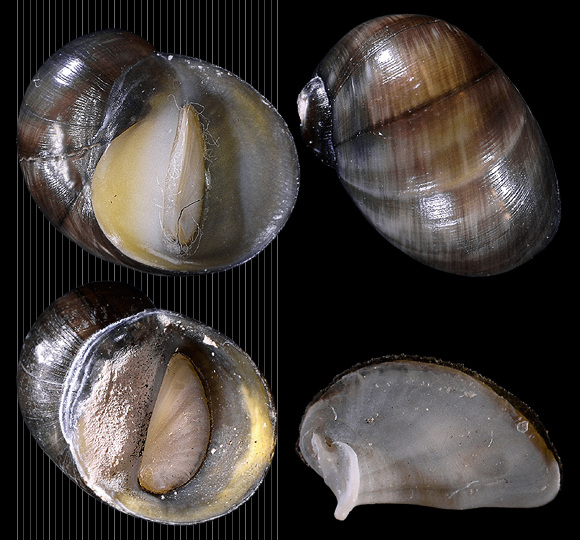
1) “baetica” Lamarck: « minuta, aterrima, nitidissima, labio tantum albo » – 2) “sardoa” Menke: « fusca, vel violaceo-nigra, rarius maculis albis ornata »… The shells above could belong to this variant. Rio de Mouros, near the roman city, Condeixa-a-Velha, Coimbra District, W. Portugal. 8-8,7mm.
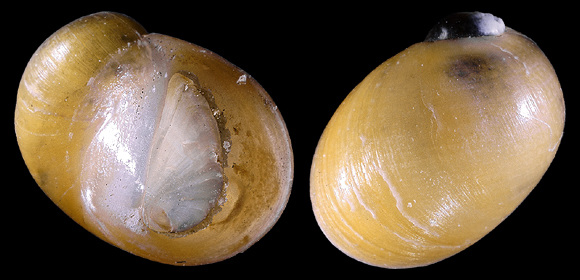
3) « albida, lineis tenuissimis, numerosissimis, densissimis, fuscis picta, et sensim in priorem transiens. Frequens. » – 4) « alba aut pallide violacea, lineis violaceis, flexuosis, angulatis, tenuioribus aut latioribus, densioribus aut rarioribus picta. » – 5) « flava, lineis violaceis ut nr.4 picta. » – 6) « flava, lineis flexuosis rubris picta. » – 7) « rosea, lineis flexuosis rubris picta. » – 8) « rosea, maculis obsoletis. » – 9) « flava, maculis obsoletis » etc. This shell could belong to this last variant. Same spot. 5,7mm.
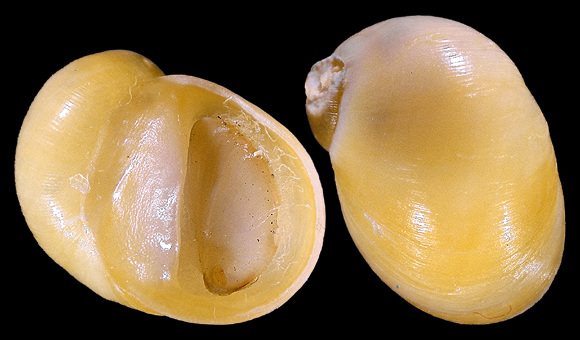


10) « flavida, maculis purpureis subquadratis, sæpe confluentibus tessellata. » – 11) « alba, fasciis transversis distantibus ziczacformibus. » – 12) « alba, fasciis transversis distantibus rectis. » The shell above could belong to the 11th variant. Caldas da Rainha, 10mm. Notice the gibbous callosity.
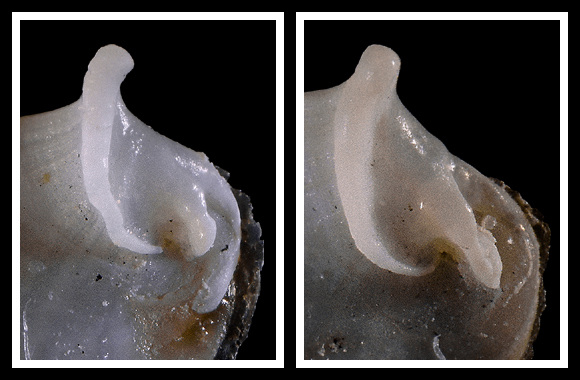

Neritina callosa Deshayes, 1835: shell roundish-ovate, with a slightly prominent spire; aperture half-moon shaped, with a sharp labrum and a smooth, rather wide and thick, pale columellar callus; there is often a marked collabral microsculture; colour and pattern variable.
On stones in the spring, Ano Kefalári, Dráma prefecture, Eastern Macedonia and Thrace, Northern Greece. 6mm.
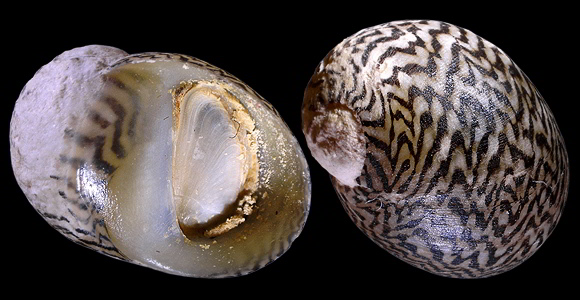

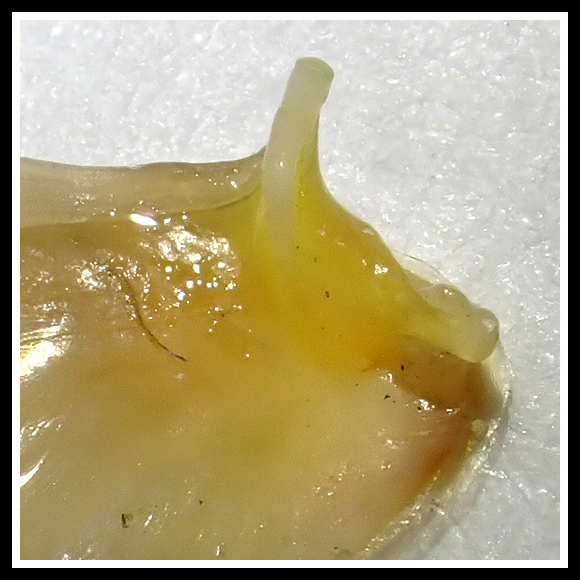
Original picture provided by R. Crnković (HR).
– (CC BY-NC-SA) –